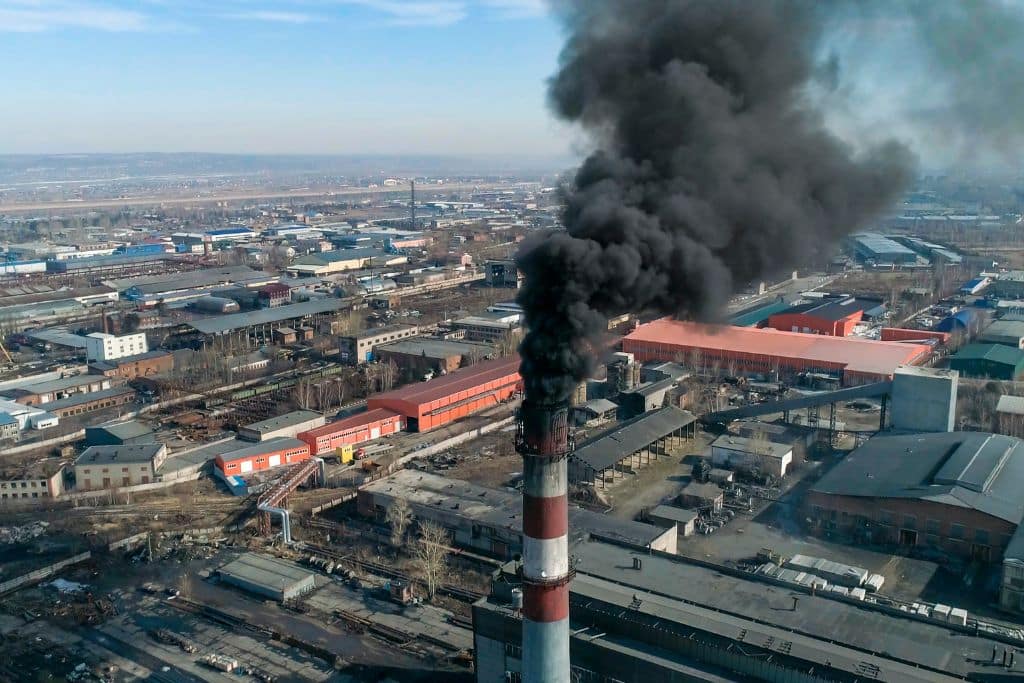Carbon dioxide emissions from fossil fuels in the EU were 8% lower than in 2022, representing the second-biggest yearly drop on record.
—
The rapid expansion of clean energy including solar and wind and lower demand for electricity across the European Union last year resulted in an 8% drop in carbon dioxide (CO2) emissions, a new report has found.
According to the Centre for Research on Energy and Clean Air’s (CREA) analysis published Wednesday, last year’s levels of annual CO2 emissions from fossil fuels were unseen since the early 1960s. The year-to-year decrease was the 27-bloc’s second-steepest after 2020, a year heavily influenced by Covid-19 lockdowns and restrictions.
The analysis revealed that more than half of the decline – approximately 56% – was attributable to the rapid expansion of renewable energy sources, particularly wind and solar, as well as a rebound in hydropower and nuclear, owing to the prolonged energy crisis sparked by the war in Ukraine, which forced the bloc to lower its reliance on petrostates such as Russia. At the same time, emissions from coal decreased 25% compared to 2022 – half of what they were in 2015, while gas- and oil-related emissions fell by 11% and 2%, respectively.
In the first half of 2023, fossil fuels generated just 33% of electricity – the lowest-ever share of the bloc’s energy mix, according to a report published by energy think-thank Ember last August. The EU currently has a binding renewable target for 2030 to a minimum of 42.5%, which would require the bloc to double its existing share of renewables by the end of the decade to be achieved.
The remaining reduction in CO2 emissions was attributed to a decrease in electricity demand owing to better weather conditions as well as reductions across other sectors, primarily industry and transport.
In March 2023, the bloc approved a ban on the sale of fossil fuel-powered cars by 2035, with intermediary goals of a 55% reduction in CO2 emissions for new cars and 50% for new vans by 2030 compared to 2021 levels. E-fuels are exempted from the ban; though not yet produced at scale, they are considered carbon neutral because they are made using captured CO2 emissions, balancing out the carbon dioxide released when the fuel is combusted in an engine. Earlier this month, the EU Council and Parliament also reached a provisional deal to lower CO2 emissions from heavy-duty vehicles. The agreement upholds the target established by the European Commission last year, which aims for a 90% reduction in emissions from new trucks over 7.5 tons and coaches by 2040.
“In 2023, EU CO2 emissions have finally fallen back to levels apparent in my parents generation in the 60s. Yet, over this time period, the economy has tripled, showing that climate change can be combated without foregoing economic growth,” said Isaac Levi, Europe-Russia Policy & Energy Analysis Team Lead at CREA.
“The 8% reduction in emissions should be celebrated but more must be done to wean the EU off fossil fuels, reduce reliance on petrostates such as Russia, whilst also leaving the world a better place for the next generation.”
Huge Investments Needed
According to a new draft document first seen by the Financial Times, reaching the bloc’s mid-century net-zero target will require yearly investments of about €1.5 trillion (US$1.6 trillion) between 2031 and 2050. While the apparent cost is huge, it would still be far less than the financial burden caused by inaction.
For instance, keeping temperature rises within the 1.5C limit set out in the Paris Agreement would save the bloc about €2.4 trillion (US$2.6 trillion) in climate change-related economic losses as well as €2.8 trillion (US$3.05 trillion) in fossil fuel imports between 2031 and 2050.
According to the World Meteorological Organization (WMO), Europe is the world’s fastest-warming continent, warming at a rate that is twice as much as any other continent in the world since the 1980s.
You might also like: ‘Fit for 55’: EU Gives Final Approval to Carbon Market Reforms, the Bloc’s Main CO2-Cutting Tool


















